Nine month olds
Your baby's developmental milestones at 9 months
Explainer
Everything you need to know about your growing 9-month-old.
By 9 months, your baby is much more mobile and likes to explore. Babies at this age are crawling and can raise themselves to stand, so safety in the home becomes an important issue as your baby's curiosity (and mobility) grows. Your baby now responds to her/his name, loves to cuddle with family members and may show shyness or fear of strangers. Games like peek-a-boo and pat-a-cake are sure to be a big hit with your 9-month-old.
| Test your knowledge |
| Social and emotional |
| Language and communication |
| Brain development |
| Movement and physical development |
| Food and nutrition |
| Things to look out for |
| Tips and resources |
| < Back to Parenting Milestones |
Test your knowledge
True or False?
Loading. ..
Social and emotional milestones at 9 months
Some of the ways you’ll see your little one learning to connect with the people around her at 9 months:
- Starting to cling onto adults she’s familiar with.
- Might be afraid of strangers.
- Has favourite toys that she reaches for often.
Tips for parents
- Follow your baby’s signals by letting her take the lead during playtime.
Language and communication milestones at 9 months
How your baby is expressing his needs:
- Pointing at things with his fingers.
- Understands the word "no" and makes lots of different sounds.
- He’ll start to copy movements he sees and sounds he hears.
Tips for parents
- Because your baby loves to point, read some board books with pictures. He’ll be able to show you what he’s interested in.
- Cut out pictures from magazines and create your own story about the objects or people in the picture.
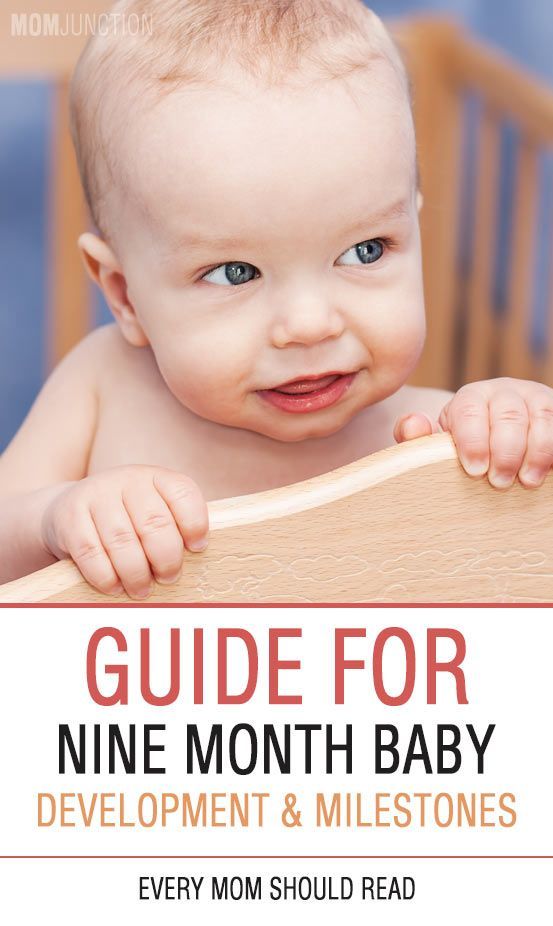
- Identify the objects your baby notices in his everyday environment or in the house and name them. This will help with their linguistic and communication development.
Brain development milestones at 9 months
How your child’s brain is growing:
- Likes to play peek-a-boo and look for things you hide.
- Tracks objects as they fall.
- Moves things from one hand to the other, and likes to put objects in her mouth.
- Picks up small objects with her thumb and index finger.
Tips for parents
- Support and encourage your baby during playtime.
- Help her develop her fine-motor skills by giving her small objects to pick up while under your supervision.
Movement and physical development milestones at 9 months
How he’ll move through his environment:
- Can get into a sitting position and sit without support.
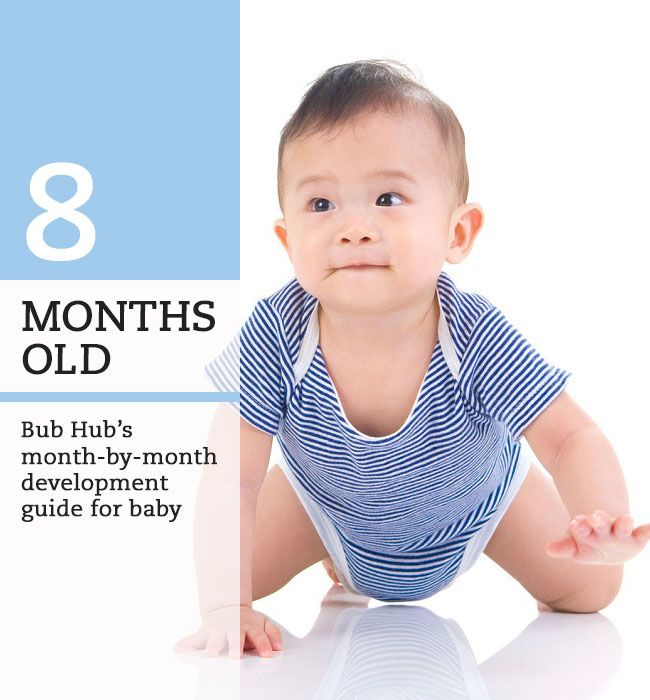
- Pulls up (using furniture for support) to stand.
- Starting to crawl.
Tips for parents
- Place your baby close to furniture so he can try to raise himself up.
Food and nutrition milestones at 9 months
What mealtimes look like at 9 months:
- Enjoys teethers.
- Beginning to eat thicker pureed foods and stays full for a longer period of time after eating.
- Reacts strongly to new smells and tastes.
Tips for parents
Try giving your little one half cup of mashed banana four times a day along with a healthy snack. For more ideas, read our article on Feeding your baby: 6-12 months.
Things to look out for
While all babies develop differently, you should speak to your paediatrician if your 9-month-old:
- Can’t sit without assistance.
- Doesn’t babble.
- Won’t respond to her own name.
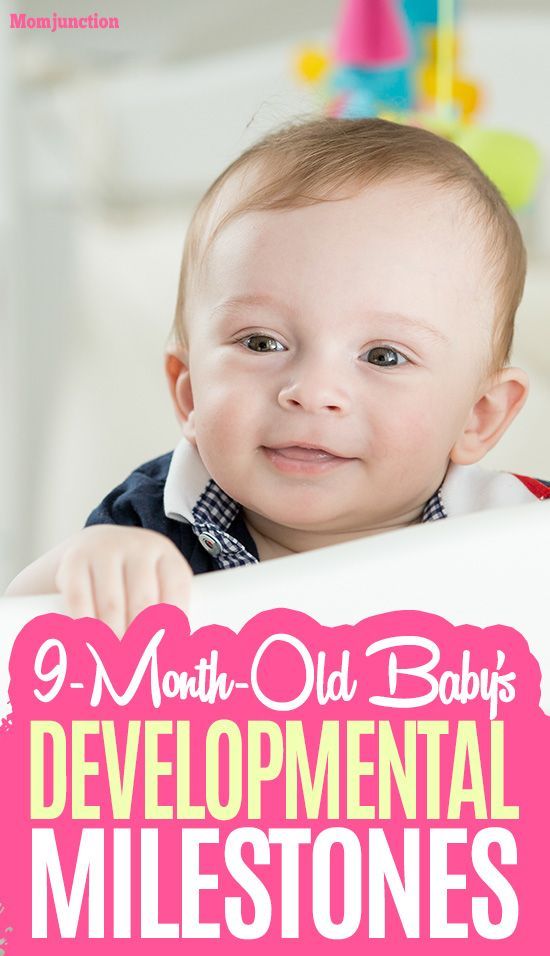
- Doesn’t put weight on her legs.
- Doesn’t play any games involving back-and-forth play.
- Doesn’t recognize adults she knows.
- Doesn’t look where you point.
- Can’t transfer toys between her hands.
Explore age groups
2 Months | 4 Months | 6 Months | 9 Months | 1 Year | 18 Months | 2 Years
< Back to Parenting Milestones
9-Month-Old Baby: Milestones, Sleep, and Feeding
Your baby is becoming more and more mobile, perhaps even crawling by now—and you couldn’t be prouder of the progress they’re making. There are so many things happening this month, including improvements in your baby’s ability to eat solids and the way they can use their fingers. Read on to find out more about the developmental milestones to look out for when it comes to your 9-month-old baby, and the kinds of eating and sleeping habits you might see at this stage.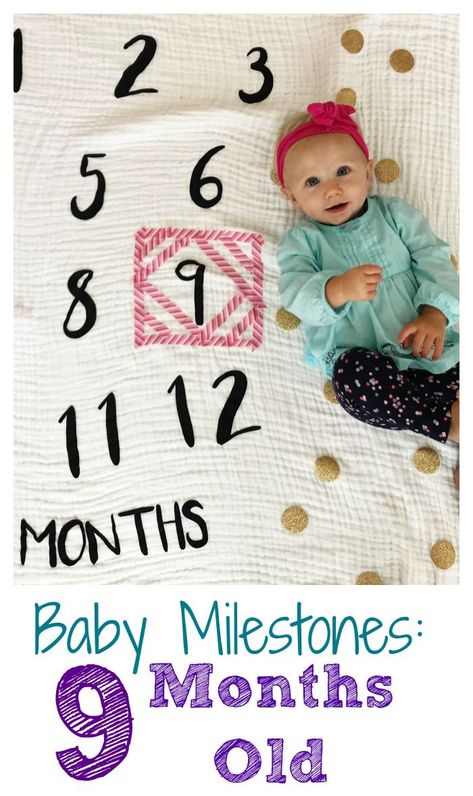
By now you know how much your baby enjoys playtime—especially if it’s with you! And you’ll have seen how much they’re growing and changing. There is no hard and fast rule about what a 9-month-old baby “should” be doing at this stage, but these are some of the development milestones you might notice around this time.
Growth and Physical Development: Does Your Baby’s Belly Stick Out?All babies grow at their own rate. At your next healthcare visit, your baby’s provider will track your 9-month-old baby’s weight, length, and head circumference using the infant growth charts to make sure their growth is on track.
When your baby begins standing (whether it’s now or in the next few months), you might notice that their belly and bottom both stick out a little. This posture might look a little odd, but it's perfectly normal for this stage of development. Their alignment will correct itself when their balance improves and they become more confident walkers—probably during their second year.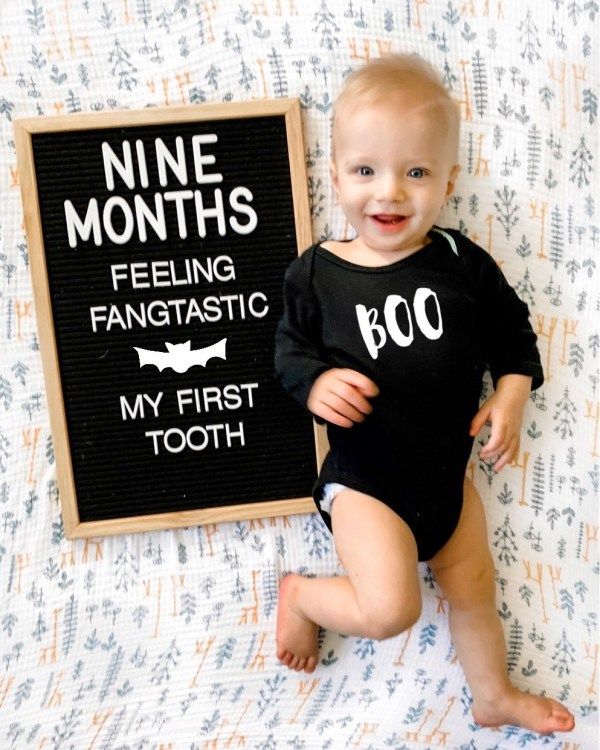
At this stage, all your baby's senses help them learn about their world. To help your baby explore their sense of smell, introduce them to new and different scents. For example, go outside and let them smell flowers or fresh-cut grass. Let them take in the scents of various types of foods, objects, and materials you find indoors, too. Just make sure whatever you introduce is safe for them to smell.
Movement: Picking Up New Experiences!Around this time your baby might figure out how to roll onto their tummy from a seated position and get back up again. All these motions are strengthening their muscles in preparation for eventually being able to walk.
At 9 months old, your baby may or may not be crawling. Or they may be doing something similar to crawling like scooting on their bottom or slithering on their tummy. Some babies skip crawling altogether, while others master it a little later.
Your baby’s hand and finger skills (fine motor skills) are also coming along. For example, they will probably have mastered the raking grasp, meaning they’re able to reach out and pull objects toward them. Now, they’re working on developing what’s called the pincer movement or the pincer grasp—the ability to pick up and hold things between the thumb and forefinger.
For example, they will probably have mastered the raking grasp, meaning they’re able to reach out and pull objects toward them. Now, they’re working on developing what’s called the pincer movement or the pincer grasp—the ability to pick up and hold things between the thumb and forefinger.
Your baby is gaining better control of their fingers and hands as they play with objects and begin to feed themselves. They’ll pick things up, shake them, bang them, and throw them, delighting in the noise they’re making as items crash to the floor. For this reason, too, make sure that whatever they have to play with is safe and unbreakable.
related baby tool
Keep an eye on your baby’s average growth by tracking height, weight, and head circumference with our simple tool.
Fill out your baby's details*:
What is your child*
Boy Girl
This is a mandatory field.
Age (between 0 and 24 months)
This is a mandatory field.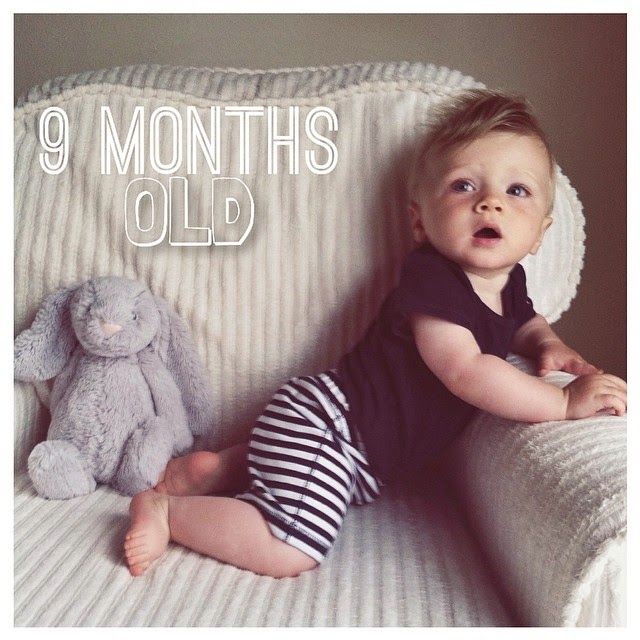
Weight (lbs.)
This is a mandatory field.
Height (in.)
This is a mandatory field.
Head circumference (in.)
This is a mandatory field.
*Input details of your baby’s last measurements. **Source: World Health Organization
Cognitive Development: Life’s Simple Pleasures
Your baby has a very short attention span and may be interested in playing with a toy for only a few minutes before wanting the next fascinating object. You don’t need to buy brand-new toys for your 9-month-old baby, though. They’ll be just as happy with basic household items like cereal boxes or plastic tubs.
The key may be this: Your baby will enjoy playing with things that are just a little different from what they already know and are familiar with.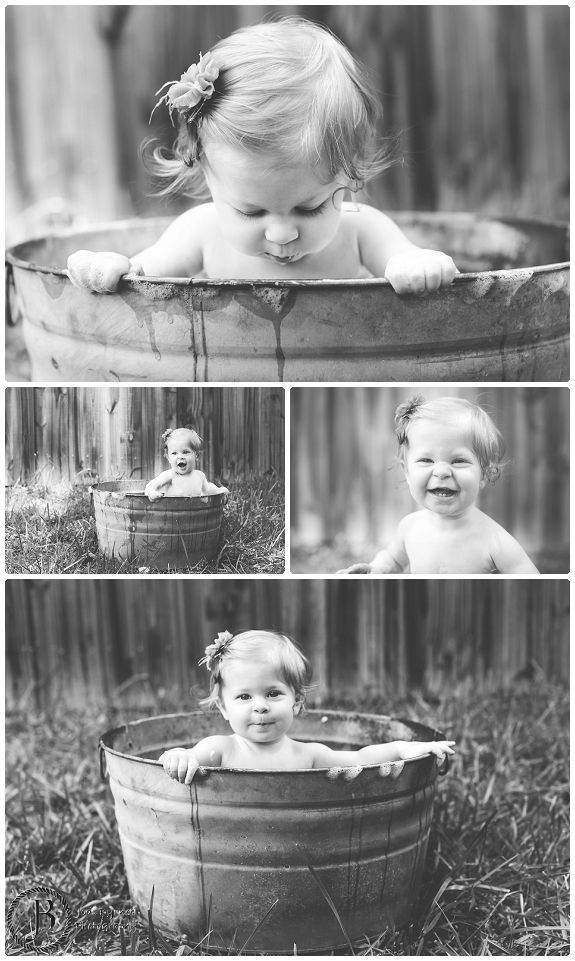 In fact, if something is too new and different, they might feel frightened or overwhelmed by it. So, as an example, if your little one loves playing with a cereal box you could put a ball in it or add a string to it so that they can pull the box along.
In fact, if something is too new and different, they might feel frightened or overwhelmed by it. So, as an example, if your little one loves playing with a cereal box you could put a ball in it or add a string to it so that they can pull the box along.
Another of life’s simple pleasures for your baby could be the humble mirror. While in past months your little one may not have been able to recognize their own reflection (perhaps they perceived it to be another baby or simply a magic show) now they might be reacting to their own reflection in a way that indicates they know they are seeing themselves.
For example, while looking in the mirror they may grab a strand of hair or try to rub something off their chin. Reinforce this “self-image” by playing with them in front of the mirror: Touch and say the names of different parts of their body or make different facial expressions and tell them what kind of face you’re making.
Have you noticed how perceptive your baby is? At 9 months old your baby can read the emotions on your face.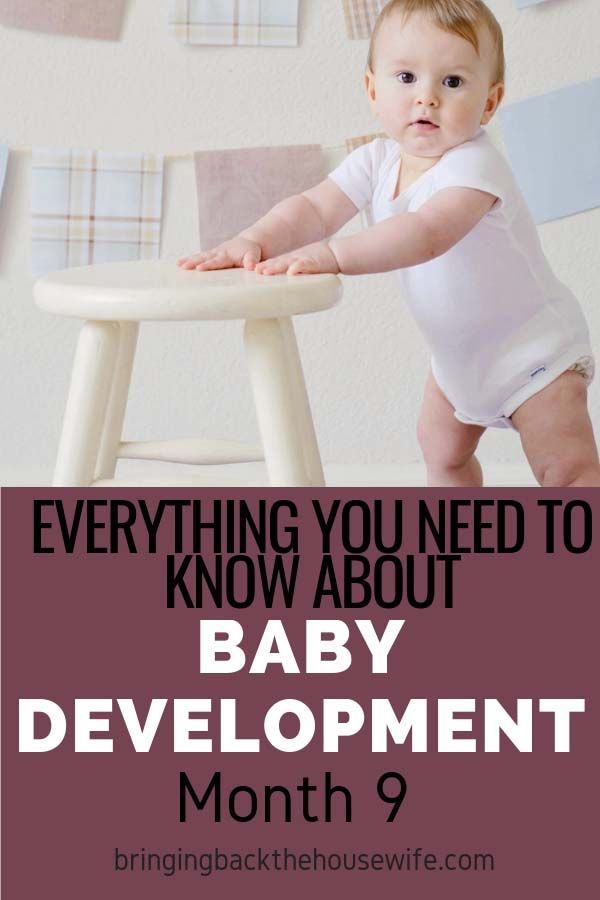 That being the case, try to keep strong negative emotions at bay; instead, provide your baby with consistent and warm contact, so that they feel secure and loved, not overwhelmed and upset.
That being the case, try to keep strong negative emotions at bay; instead, provide your baby with consistent and warm contact, so that they feel secure and loved, not overwhelmed and upset.
Here are some things to do with your 9-month-old to promote their healthy growth and development at this stage:
Spend time on the floor playing with your baby. If your baby is already crawling, one fun idea is to create an obstacle course with pillows, boxes, and cushions for them to crawl over and between. Dangle an enticing object just beyond their reach to coax them into crawling toward it.
Wait before offering help. Knowing when to help your child and when to let them figure out how to do something for themselves is a tricky balance. Say they’re playing with a toy, but it rolls under a pillow, do you help them get it out or let them try? If you can tell they’re frustrated, then perhaps help them, but if they see the situation as a challenge and are still working on retrieving the toy, then let them keep trying.
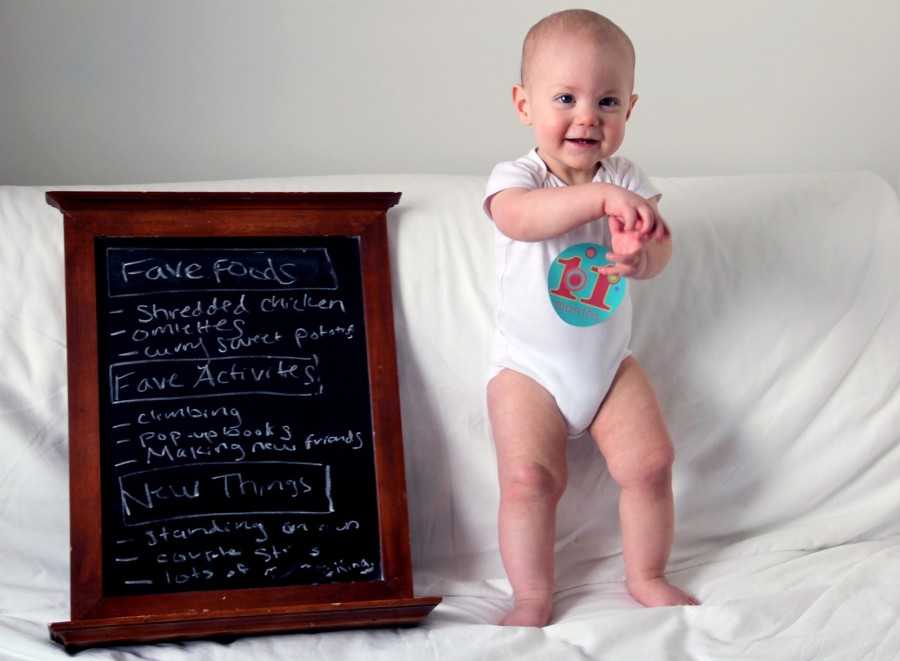
Talk, read, and sing. Chat with your baby every chance you get, describing what you're doing as you go about daily activities such as dressing and feeding them. Read to them every day and consider making a bedtime story part of your nightly ritual. Singing is important too—try to include songs and nursery rhymes that incorporate gestures and finger play.
Give your baby the chance to meet other babies and their parents.Your 9-month-old baby’s social milestones may include meeting others. But be aware that your baby may feel uncomfortable around new people. Give them time to warm up to new people and situations.
Around this time, about half of your baby’s daily calories might come from soft table foods and purees, with about the other half coming from breast milk or formula. Wondering about how often “should” an 8-month-old eat? Your baby’s feeding schedule would ideally include three main meals a day with two snacks in between those meals.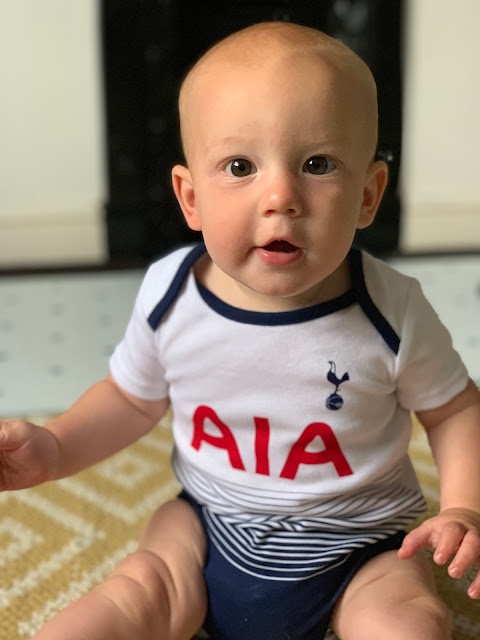
And what can a 9-month-old eat?They may be able to help themselves to finger foods, such as small pieces of steamed vegetables or soft banana. You could also offer them a small spoon with a little yogurt on it so that they can try to move it toward their mouth.
During self-feeding, much of your baby’s food will end up on the table or floor, or on their face or clothes, so don’t expect them to be able to feed themselves a complete meal just yet. Always supervise your baby when they’re trying to eat and don’t give them big chunks of food, or any small hard foods; at this stage, they may swallow without chewing, and bigger pieces can be a choking hazard.
Here’s an example of a daily menu for your 9-month-old including both baby food and breast milk or formula. It also gives you an idea of approximately how much to give your 9-month-old.
How Much Sleep Does a 9-Month-Old Baby Need?How many hours “should” a 9-month-old sleep? And how many naps are needed? At this age, babies typically sleep about 10 to 12 hours at night, and take about 2 naps during the day, usually mid-morning and mid-afternoon.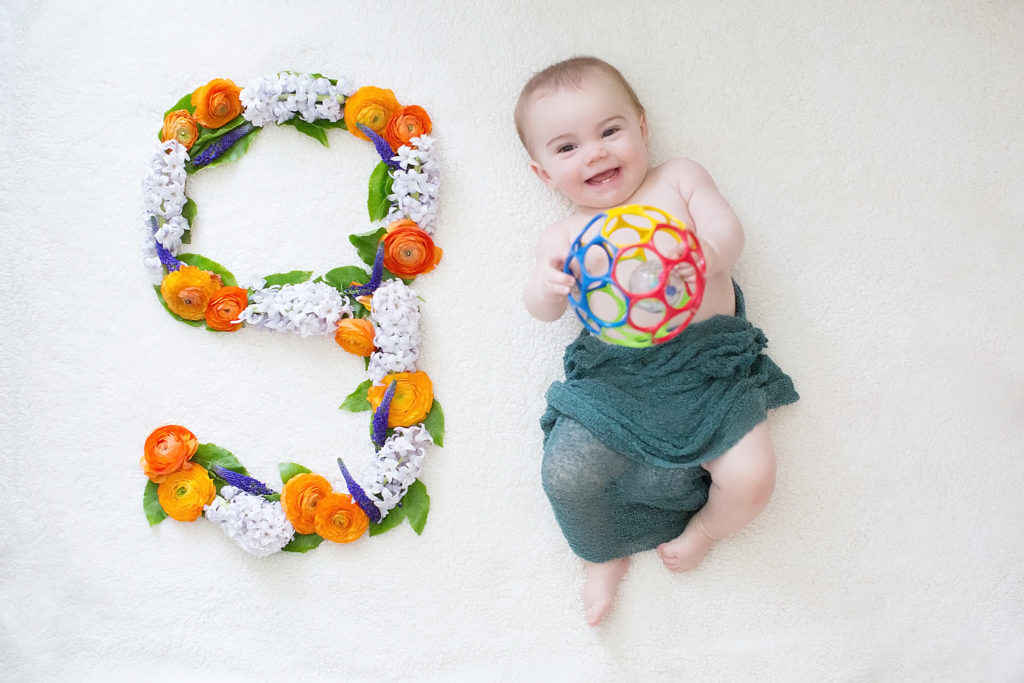
By this stage your baby probably won’t be needing a middle-of-the-night feed but may wake up at night if they feel anxious about where you are. They might suck their thumb to cope or snuggle with a comfort item such as a small blanket.
If you hear your baby cry, go to them and briefly reassure them that all is well. Of course, you should always check that your baby is comfortable and not sick, but if everything seems OK, resist turning on the light and picking them up. The key is to calmly and consistently reassure them that you’ll be there if they need you, and slowly teach them that they can sleep peacefully without worrying that you’re not there.
To help you track your 9-month-old’s nap and sleep schedule, download the Smart Sleep Coach app by Pampers. Co-created by pediatricians and sleep experts, this easy-to-use app can come in handy when sleep training or when encountering difficulties like sleep regression.
A Day in the Life of Your 9-Month-Old Baby
A typical 9-month-old baby’s daily schedule could include sleeping, feeding, eating, bathing, and playing. Here’s just one example of what a day in your baby’s life might look like:
Sun protection is crucial for your baby’s skin. In the warmer months it’s natural to want to go outside with your baby, but always remember that too much time in the sun can damage skin. In fact, harmful UV rays can cause damage even in the cooler months, so these sun protection tips are important to follow year-round:
Aim to keep your baby out of direct sunlight between 10 a.m. and 4 p.m., when it’s at its strongest.
Dress your baby in lightweight cotton clothes that cover much of the skin. Think long sleeves and long pants.
Use a beach umbrella as shade when playing outside and pull the shade cover down on the stroller during walks.
Pop a wide-brimmed hat on your baby.
Apply a broad-spectrum sunscreen with SPF 30 or higher on your baby's skin about half an hour before you head outside.
Reapply it at least every two hours.
If your baby does get sunburned, help ease the discomfort by placing a cool washcloth on the affected areas or bathing your little one in cool water. Burns that blister may need medical attention, so ask your baby’s healthcare provider for advice.
Along with sun protection and skin care, other health concerns to be aware of include whooping cough and middle ear infections.
Whooping cough. Also known as pertussis, whooping cough is a bacterial infection that results in inflamed airways. It causes severe coughing that may have a “whooping” sound, particularly in older children. Babies in their first year are at the greatest risk of whooping cough developing into something more severe, so prompt medical care is required. Contact your baby’s healthcare provider right away if your baby develops a cough that becomes more severe or if they become exhausted after coughing. Also contact your provider ASAP if your baby is short of breath, if they have bluish lips or fingertips, or if they drool or vomit from coughing.
Follow the healthcare provider’s treatment plan, keeping in mind it may be a few weeks or even months before the cough clears.
Middle ear infections. Two-thirds of all children come down with an ear infection by the time they are 2 years old. At 9 months old your baby can’t tell you with words that their ear hurts, but they might show you in other ways. For example, they may cry during feedings because sucking and swallowing causes pain in the middle ear. They may also have trouble sleeping or develop a fever. You might see blood-tinged fluid or pus come from the infected ear. Or you might notice theydon’t seem to hear as well. Middle ear infections are most common during the cooler months. Contact your baby’s healthcare provider if you suspect a problem. The provider will suggest a treatment plan, which may include antibiotics. If your baby is prescribed antibiotics, ensure they take the whole course and don’t stop giving the medication even if your baby seems better.
On the lookout for some baby gear this month? Here are some items that might come in handy:
Sippy cups. If you haven’t already, now’s a good time to introduce your baby to a sippy cup or straw cup. A cup with two handles will be the easiest for your baby to hold at first.
Baby toys. At 9 months old, your baby will have fun with things like stacking cups, building blocks, an unbreakable mirror, push-pull toys, or even an empty box or a paper towel tube.
Play mat. A play mat can provide a soft and comfortable place for your baby to play. Many of them also include hanging toys and other features to capture your baby's attention.
Diapers, wipes, and diaper rash cream. Make sure to have plenty of diapers and wipes on hand so you don't run out, as well as some diaper rash cream.
Baby toothbrush.
Your 9-month-old baby may have a few teeth by this point. Try introducing a soft-bristled toothbrush and use just a tiny amount of fluoride toothpaste. Eventually they’ll get used to the feeling of having their teeth brushed.
Are you thinking about a family trip? You might feel anxious about traveling with a baby in tow, but this is completely doable—and lots of fun! Here are some tips to make your trip a success:
Choose a destination that's relaxing and safe, so you feel less overwhelmed. It may help to go somewhere you’ve been before and feel comfortable with.
Don’t create a jam-packed itinerary. Instead, add lots of down time and rest to your vacation plans.
Think about where your baby will sleep. Will you use a portable bed? If so, it may help to let them have a few naps in it before you head off so theyhave a chance to get used to it.
Try to mimic home in the ways you can. For example, perhaps follow a similar daily routine or take your baby’s favorite toy to give them comfort.
Pack a travel diaper bag with extras of things like clothes, diapers, snacks, and water.
If you’re going on a plane, read this article on flying with a baby for great ideas on tackling this with your baby.
Even though it’s easier said than done, try to stay calm. If you take on an easygoing attitude and you’re having a good time, your baby will be more likely to do the same.
Schedule your 9-month-old baby’s checkup. At these visits your baby’s healthcare provider will ensure your baby is eating and sleeping well and meeting growth and development milestones. The provider will also check that you as the parent are doing OK and offer guidance on timely issues. Use this opportunity to ask questions and get advice if needed.
.
Secure the furniture. Right about now or during the next few months, your baby will start to pull themselves up to stand. Their arm muscles are stronger than their leg muscles, so they will probably cling onto furniture for support. Now is the best time to concentrate on babyproofing your home, including securing furniture to the walls or removing any furniture that might topple over.
Lower the mattress in your baby’s crib. Before your baby can stand on their own, lower the mattress to the lowest setting possible.
Sign up for rewards. Are you getting fantastic rewards for all those diapers you’re buying? If not, it’s time to download the Pampers Club app.
Start looking ahead. Check out what kinds of things may happen when your baby is 10 months old. To celebrate and share the news with friends and family, download and print these milestone cards.
For even more information, sign up to get our regular emails:
How We Wrote This Article
The information in this article is based on the expert advice found in trusted medical and government sources, such as the American Academy of Pediatrics and the American College of Obstetricians and Gynecologists. You can find a full list of sources used for this article below. The content on this page should not replace professional medical advice. Always consult medical professionals for full diagnosis and treatment.
Baby 9 months old ✔️ What a baby should be able to do
Nine months is the age when you can already determine the nature of your baby. Nine-month-olds are increasingly different from each other: some tend to actively explore the world, others prefer calm and focused activities. But although individuality is clearly visible in each baby, the development of a child at 9 months must meet certain criteria.
Content:
- Physical development
- What should a child be able to do at 9 months?
- Basic skills
- Motor activity, reflexes, motility
- Intellectual development
- Psycho-emotional development: emotions and mood
- Changes in the perception of the surrounding world: the development of the senses
- Speech and communication
- Playing skills
- Social skills
- Daily routine, sleep and nutrition rules
- Baby care at 9 months
- Potty training
- What a child should be able to do at 9 months: the opinion of Komarovsky
- Development problems at 9 months and how to solve them
- How to help your baby develop: tips for parents
Prostock-studio/Shutterstock. com
Physical development
The main changes in the physical development of the child, noticeable at the ninth month of life:
- muscles become stronger, coordination improves markedly - confirmation that the baby is almost ready to start walking;
- hearing continues to develop: the baby is able to recognize quiet sounds, is not afraid of familiar sounds;
- in many children, incisors erupt on the lower jaw.
According to the World Health Organization, the average height of a nine-month-old baby should be between 68 and 74 cm and weight between 7.3 and 9.9 kg. The table below shows the norms of weight, height, head and chest circumference of children at 9 months, corresponding to the centile tables used by Russian pediatricians:
| Boys weight | Girls weight | Boys height | Girls height | Boys head circumference | Girls head circumference | Boys chest circumference | Girls chest circumference |
| 7. | 6.5-10.5 kg | 67.5-76 cm | 65.5-75 cm | 42.6-47.5 cm | 41-46 cm | 44-51 cm | 44-49 cm |
⠀
A specific child may not meet conventional standards - for example, if at birth the baby was large or, conversely, was born with a small height and weight. Then the norm of weight and height at 9 months can be calculated as follows: compared with the previous month, the weight should increase by about 0.5 kg, height - by 1-2 cm. Head and chest circumferences increase by an average of 1 centimeter.
Differences between boys and girls
Prostock-studio/Shutterstock.com
The physical differences between boys and girls are still minimal: the height and weight of babies are approximately the same regardless of gender. Boys and girls also learn basic physical skills at about the same time.
At the age of nine months, differences in the emotional and intellectual development of children may appear: boys need the presence of their mother more, and girls are more affectionate with loved ones. Boys tend to involve adults in active games, girls can get carried away with calm activities for a long time. Although there are exceptions here: boys are diligent, and girls are very active - both options are completely normal.
Approaching the first important date, one year, the child may begin to copy the behavior of the people around him of his gender. Boys at nine months sometimes show unreasonable aggression, and girls excessive emotionality, imitating the behavior of older children or adults. The task of parents in such cases is to gently stop unwanted manifestations of character. Nine-month-olds already understand the word "no".
Physical ability
Prostock-studio/Shutterstock.com
Basic physical abilities of a nine-month-old child:
- stands confidently at the support, tries to stand without it;
- sits confidently;
- takes steps to the side at the support, shifting from foot to foot;
- has already mastered the skill of crawling well.

If your baby has not mastered all the skills - just give him time, the child's personal peculiarity may manifest itself in slowness. Some babies seem to prepare for the “snatch” and may start to stand well, crawl or even walk right away a little later - at 10-11 months.
What should a child be able to do at 9 months?
Prostock-studio/Shutterstock.com
A variety of baby skills continue to develop, and new skills are emerging: related to physical activity, intellectual and emotional development. The sense organs also function better. A noticeable breakthrough in a nine-month-old child is observed in the field of speech formation, the development of gaming and social skills.
Basic skills
What a child can do at 9months — basic skills:
- has mastered or is trying to master the skills of sitting and crawling;
- tries to walk with or without support;
- plays meaningfully with toys;
- chews solid food if at least five teeth have erupted;
- drinks from a mug by himself, understands the purpose of the pot.
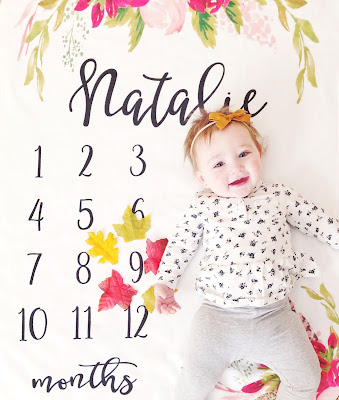
Movement, reflexes, motor skills
Prostock-studio/Shutterstock.com
Most nine-month-old babies can sit and crawl. Often in a baby at 9months there are manifestations of other motor activity:
- gets up and stands without support;
- self-sits, can sit up to 15 minutes continuously without changing position;
- takes the first steps, holding on to the edge of the furniture or the hand of an adult;
- chooses an alternative - instead of crawling - method of movement: on the buttocks or on his knees.
By the middle or end of the ninth month of a child's life, reflexes characteristic of newborns fade away. Now, if the baby is placed on the back, he does not bend his limbs and does not squeeze his toes: on the contrary, the child stretches his arms and legs to the sides and takes his feet back without pressing his fingers.
At nine months, fine motor skills are actively developing, closely related to the development of speech. The child is able to take small objects using the thumb and forefinger, builds towers from cubes, takes several small toys in one hand.
Intellectual development
Prostock-studio/Shutterstock.com
Moms and dads of a nine-month-old baby often feel like their baby is growing up literally every day. This is true - at the age of 9 months, the neuropsychic development of the child becomes especially active, the baby acquires new skills that confirm the timely intellectual development:
- understands and fulfills simple requests, such as: “Take a cube”, “Give me a pen”, “Give me a spoon”;
- knows his name and always responds to it;
- builds complex cause-and-effect relationships relative to an earlier age: for example, he understands that if dishes ring in the kitchen, it means that dinner is coming soon;
- understands individual words, showing the named object at the request of an adult: for example, he shows a picture of a dog in a picture if asked to show a dog.
Psycho-emotional development: emotions and mood
Prostock-studio/Shutterstock.com
The baby clearly shows emotions and mood:
- demonstrates attachment to favorite toys, distinguishes them from other objects;
- shows mood and emotions with the help of pronounced facial expressions, experiences various and complex emotions: joy, interest, anger, shame, disgust;
- copies the behavior of adults, tries to involve mom and dad in all his activities;
- is wary of strangers, sometimes even hostile, tries to avoid bodily contact with strangers;
- knows how to attract the attention of parents, and tries to slightly manipulate adults: usually with the help of tears, whims.
A nine-month-old child feels well the emotions of close people: he is happy when his parents laugh, and sad if a loved one is upset.
Changes in the perception of the surrounding world: the development of the senses
Prostock-studio/Shutterstock.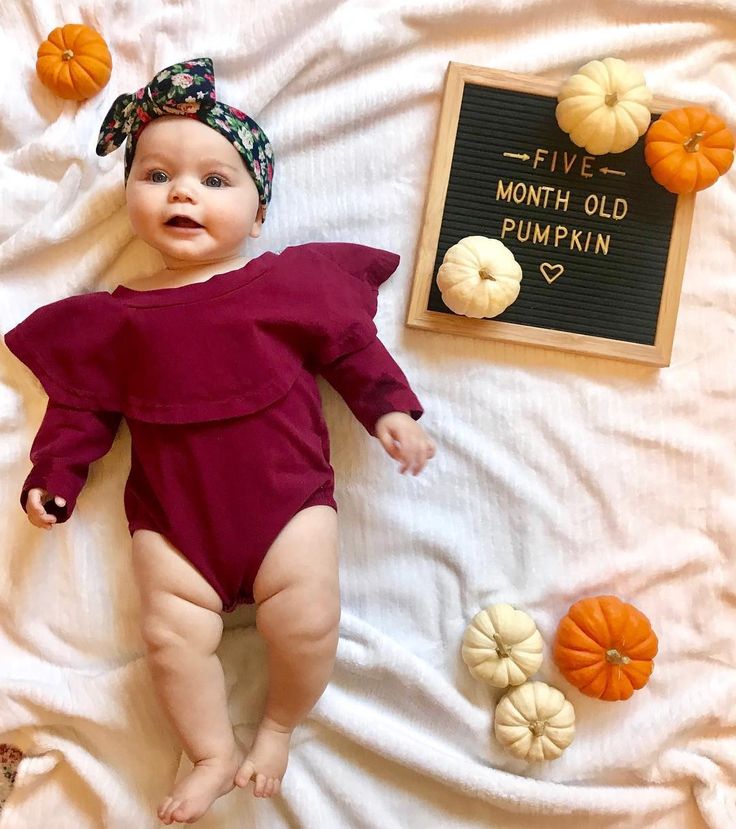 com
com
At the age of 9 months, the development of hearing and vision is especially noticeable. The child distinguishes quiet sounds: whispers, quiet music from the next room. The most favorite melodies appear, to which the baby emotionally reacts: claps his hands, sings along, dances.
Vision at nine months develops thanks to the child's ability to concentrate: he follows a fast moving object with his eyes, attracts the attention of parents with the help of eye contact, instantly distinguishes familiar people from strangers.
Speech and communication
The baby already communicates consciously and with pleasure with close people. And although only simple words are present in his speech, it seems to the child himself that he is already talking with his parents: he asks, answers, agrees, refuses. True, it is still difficult for others to make out the speech of the young speaker - nine-month-old children clearly pronounce words of one or two syllables: “yes”, “no”, “mother”, and the like.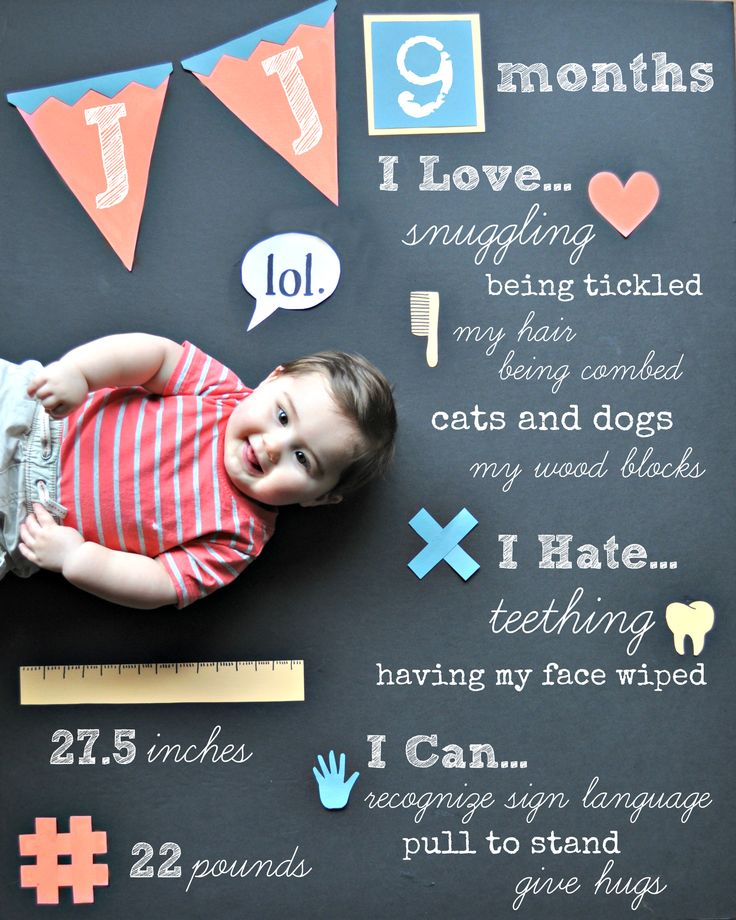
The child also uses sign language to communicate with loved ones: he nods when he agrees, shakes his head when he refuses, and waves his hand when saying goodbye. He understands the names of body parts well and willingly shows his eyes, mouth, hands at the request of his parents. Starting from 9months, the passive vocabulary of the baby is actively enriched - it is important for adults to talk more with their son or daughter, paying special attention to the names of objects.
Playing skills
Prostock-studio/Shutterstock.com
A nine-month-old baby enjoys playing with toys that previously did not arouse much interest in him: he assembles and disassembles a pyramid (usually not following the correct sequence), rolls cars, takes toys out of boxes and folds back. As before, household items remain the most favorite toys: the child likes to tear paper, knock with spoons, use the lid of the pan as a drum.
The baby willingly looks at bright pictures in children's books, turns the pages himself.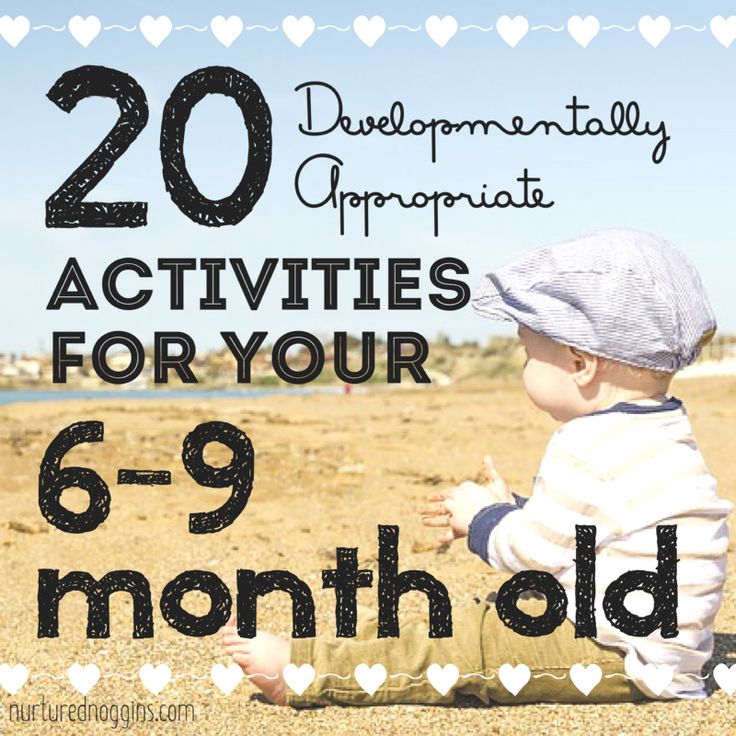 Plays patties and other finger games, plays hide-and-seek with an adult, hiding from mom or dad under a blanket.
Plays patties and other finger games, plays hide-and-seek with an adult, hiding from mom or dad under a blanket.
At 9 months, children become especially interested in walking on the street, watching the street games of older children.
Social skills
A 9-month-old baby, having perfected the skills of sitting and crawling, strives for independence. Often a child tries to defend his right to independence: he does not obey his parents, pushes his hand away when they offer a thing that is not interesting to him, expresses disagreement in any other way.
Parents can try to direct their children's manifestations of independence in the right direction. For example, you can ask the baby to wash his own hands, use cutlery, try to take off some items of clothing.
Day regimen, sleep and nutrition rules
Prostock-studio/Shutterstock.com
The duration of the baby's sleep changes, and, accordingly, the whole daily routine becomes different compared to an earlier age.
On average, a 9-month-old baby sleeps about 15 hours, of which 9-11 hours falls on night sleep, the rest of the time - on the day.
During the day, the baby usually sleeps twice, but more often he chooses his own bed for sleep than the stroller - walking on the street captures the attention of the crumbs so much that he does not feel sleepy. Nine-month-olds often sleep continuously at night, but breastfed babies may wake up 1-2 times a night to get breasts.
Approximate daily routine for a baby at 9 months may look like this:
- 7.30 - get up, hygiene procedures, feeding;
- 8.30 - quiet activities and games;
- 11.00 - feeding;
- 11.30 - sleep;
- 13.00 - walk;
- 14.30 - feeding;
- 15.00 - active, calm, educational games and activities;
- 16.30 - walk, partially or completely combined with sleep;
- 18.30 - feeding;
- 19.00 - mostly calm activities that do not disturb the nervous system before going to bed: reading, educational games;
- 21.
00 - hygiene procedures;
- 21.30 - feeding and getting ready for bed;
- 22.00 - the beginning of the night's sleep.
A nine-month-old baby eats 5-8 times depending on the type of feeding - children who receive breastfeeding eat more often than their peers who are formula-fed.
The child's diet becomes more varied: sour-milk products, meat and fish dishes can be added to already introduced cereals, fruits and vegetables. Before introducing new complementary foods, it is advisable to consult a pediatrician .
Baby Care at 9 Months
Prostock-studio/Shutterstock.com
Baby care remains the same: keep hair, nails and ears clean, wash your baby, bathe every other day or more often as needed. Teeth should be brushed regularly, even if there are not many of them at all, using a special brush and paste - more accurate recommendations for oral care will be given by a pediatric dentist.
If you haven't used additional hardening procedures other than standard sun and air baths, now is the time to do it. You can gradually teach your son or daughter to sleep with the window open, starting with a long airing of the children's room before going to bed, eventually leaving the window open all night. Another useful hardening procedure is dousing the legs: start with warm water, gradually move to cool, when the child gets used to it, move on to contrast douches.
Read more How to increase immunity at home: the rules for hardening children and adolescents.
Potty training
Prostock-studio/Shutterstock.com
At 9 months old, it's time for a baby to learn about the purpose of the potty, provided that he already knows how to sit well. In order for the study to be successful, invite the child to use the potty immediately after waking up, before going to bed, after eating and walking - at these moments he will most likely use the potty for its intended purpose.
Potty misfires are common in 9-month-olds, on average babies are potty trained by one year or so. Don't insist on spending a lot of time on the potty to achieve the desired result - if nothing happens within one or two minutes, let the crumbs get off the potty so that this important item does not start to cause rejection in its owner.
What a 9-month-old baby should be able to do: Komarovsky's opinion
Prostock-studio/Shutterstock.com
Evgeny Olegovich Komarovsky, a well-known Russian pediatrician and Ph.D. to toys of different colors and textures.
At the age of 9 months, the doctor recommends starting the socialization of the baby: parents can bring the child to the playground so that he gradually learns to interact with the team.
As for the rest, Evgeny Olegovich advises not to chase average standards and achievements of neighbor children. Komarovsky is of the opinion that each baby develops at an individual and right pace for him.
Developmental Problems at 9 Months and How to Solve Them
Prostock-studio/Shutterstock. com
Parents of young children often worry about whether their son or daughter is developmentally behind and whether some disturbing symptoms are normal. Difficulties that do not indicate problems in development and should not bother you:
- The child does not want to try new foods. Especially often unfamiliar food is rejected by breastfed children, for whom mother's milk remains the preferred dish. What to do: offer new foods when the baby is definitely hungry, try decorating the dish in an unusual way.
- The baby is very afraid of strangers and shows a lot of fear, a normal behavior at the age of nine months, which will go away on its own with time.
- Unpleasant teething symptoms: the baby is naughty, some children may have a fever. What to do: Ask your doctor to prescribe teething medications or other advice on how to manage the problem.
Symptoms that may indicate developmental problems - check with your pediatrician if you notice these symptoms in your baby:
- does not sit up on his own even when seated by an adult;
- does not respond to strangers;
- does not try to repeat the sounds and syllables after the parents.
How to help your baby develop: tips for parents
Prostock-studio/Shutterstock.com
Activities and games to help your nine-month-old baby develop properly:
- any activities aimed at developing fine motor skills: finger games, games with toys and objects made of different materials, pouring cereals and pouring water from one container to another;
- games with cubes, pyramids, balls of different sizes and made of different materials;
- first drawing lessons using finger paints;
- training in the ability to put on and take off clothes in a playful way;
- If possible, socialize and play with other children under adult supervision.
In fact, serious developmental disorders are visible much earlier than 9 months, and your pediatrician would have noticed them by now. But if you are still worried about the developmental features of your son or daughter, tell your doctor about your worries: the younger the child, the higher the likelihood of correcting problems without the slightest consequences.
Please rate the article
It is very important to us!
Average rating: 4.1 / 5. Votes: 41
No ratings yet. Rate first!
Receive a school preparation checklist to your mail
Letter sent!
Check e-mail
In Australia, a mother discovered menstruation in her nine-month-old daughter - Gazeta.ru
In Australia, a mother discovered menstruation in her nine-month-old daughter - Gazeta.Ru | News
close
100%
In Australia, a woman noticed that her nine-month-old daughter began menstruating and turned to doctors for help. This is reported by The Mirror.
After a woman found blood in her daughter's diaper and went to the doctors, the doctors diagnosed the girl with precocious puberty. The girl is now three years old.
“It's hard to tell if she has other symptoms like mood swings or pain because she's small. She does not have pubic hair or breasts, which some children with this disease have, ”the girl’s mother shared with the publication.
As the Australian added, she had to warn her daughter's kindergarten teachers to be ready for the girl's menstruation.
She says she doesn't like telling people about a rare pathology, but she thinks people need to know about it to avoid misunderstandings and unexpected reactions.
As the girl's mother concluded, she regularly brings her daughter for examinations to monitor how quickly the child's premature development is progressing. According to her, after the first menstruation, the girl's cycle went wrong and now she is faced with only small spotting.
Earlier it was reported that Muscovite Valya Isaeva, who gave birth at the age of 11, became a mother for the fourth time.
Subscribe to Gazeta.Ru in News, Zen and Telegram.
To report a bug, select the text and press Ctrl+Enter
News
Zen
Telegram
I became a godmother for my friends son, and now they demand expensive gifts from me
An entrepreneur from Moscow talks about the obligations of a godmother

